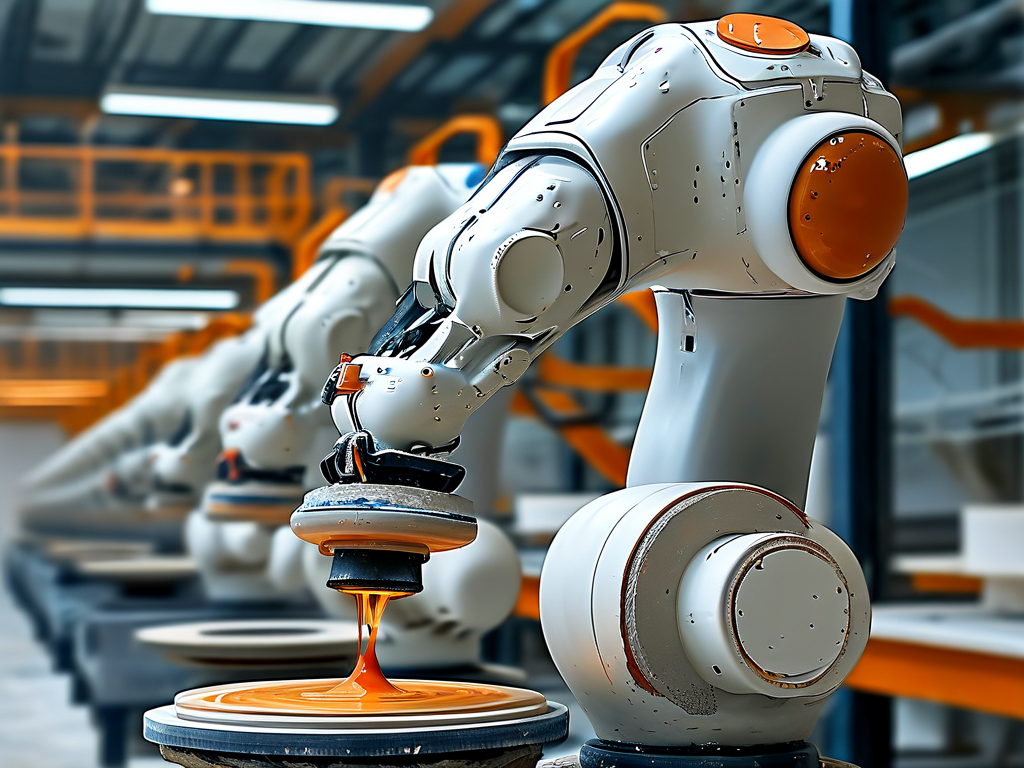The integration of robotic glaze application systems is transforming traditional ceramic manufacturing, merging precision engineering with artistic craftsmanship. Unlike conventional manual methods, this technology leverages advanced programming and sensory feedback to deliver unparalleled consistency in surface coating – a critical factor for industrial-scale production.

Technical Foundations
Modern robotic glaze applicators utilize six-axis articulated arms equipped with specialized spray nozzles and adaptive pressure controls. These systems incorporate 3D vision scanning to map product contours, enabling real-time adjustments for complex geometries. The KUKA KR QUANTEC series, for instance, demonstrates millimeter-level accuracy when coating irregular ceramic artworks, achieving coverage uniformity previously unattainable through human labor.
Operational Advantages
- Quality Enhancement: Automated systems eliminate human-induced variances, maintaining optimal viscosity (typically 25-35 seconds as measured by Ford cup #4) and layer thickness (0.3-0.5mm) across production batches.
- Material Efficiency: Smart fluid dynamics algorithms reduce glaze waste by 40-60% compared to manual spraying, significantly lowering material costs.
- Environmental Impact: Closed-loop filtration systems capture overspray particulates, decreasing workshop air pollution by 70% per ISO 14644-1 standards.
Industry Applications
Leading sanitaryware manufacturers like Kohler and TOTO have implemented robotic glazing cells for toilet and sink production. Their reported outcomes include:
- 85% reduction in surface defects
- 300% increase in daily output
- 50% shorter staff training cycles
The technology also benefits artistic ceramics. Studio potters now employ compact robotic units (e.g., ABB IRB 1520ID) for reproducing intricate glaze patterns while retaining manual finishing touches, blending digital precision with human artistry.
Implementation Challenges
Despite its benefits, transitioning to robotic glazing presents hurdles:
- Initial Investment: Complete systems range from $150,000 to $500,000
- Maintenance Complexity: Requires specialized technicians for servo motor calibration and nozzle upkeep
- Material Adaptation: Glaze rheology must be optimized for robotic spraying parameters
Future Developments
Emerging innovations include:
- AI-powered defect detection using convolutional neural networks
- Self-cleaning nozzle arrays with titanium nitride coatings
- Hybrid systems combining robotic spraying with manual detailing stations
As the global ceramic coatings market approaches $12.7 billion by 2029 (Allied Market Research), robotic glazing stands poised to redefine quality standards while addressing skilled labor shortages. This technological evolution doesn't replace artisans but rather amplifies their capabilities, creating new paradigms for ceramic production in the digital age.

